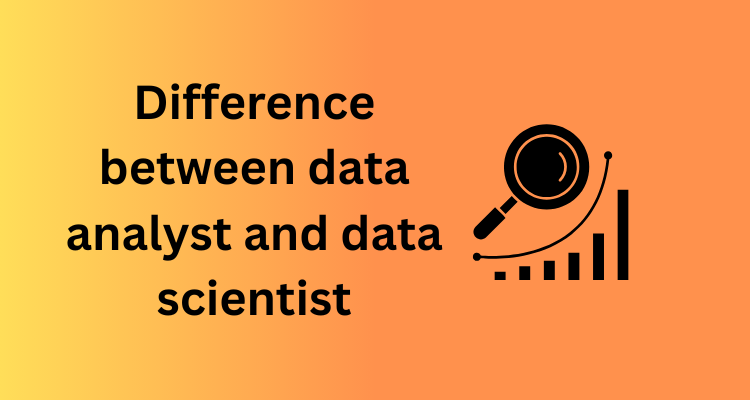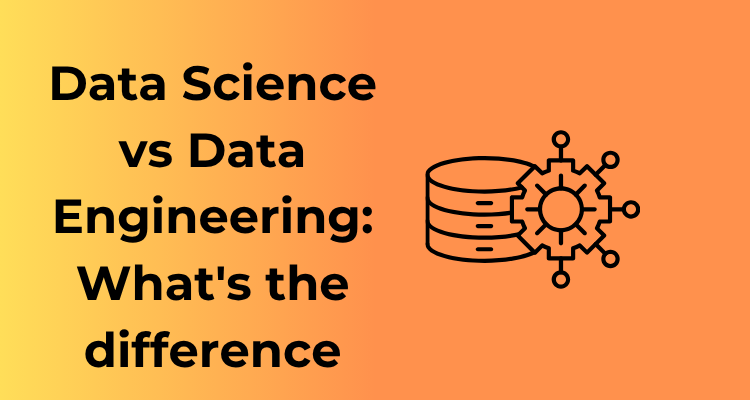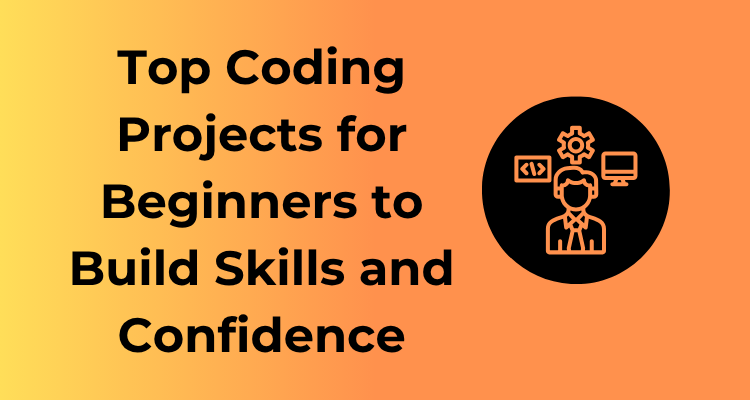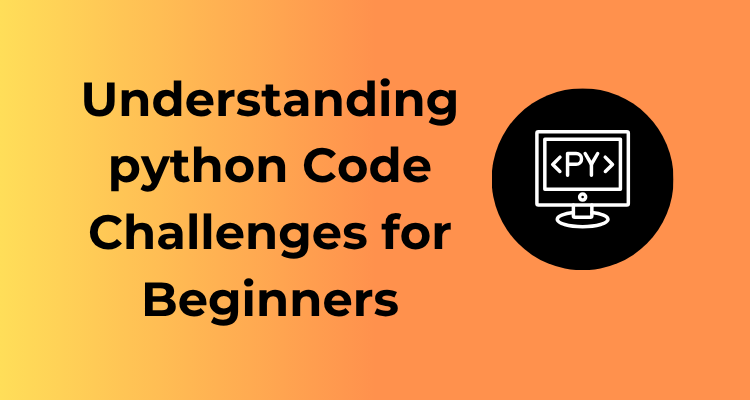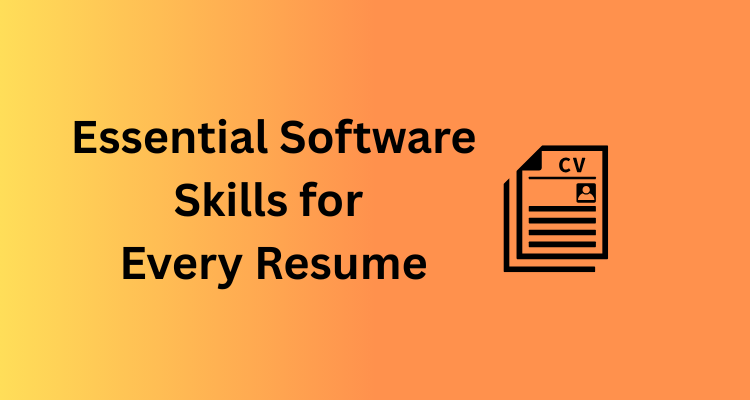Let’s talk about two of today’s most sought-after professions in the world of data: Data Analysts and Data Scientists. You may hear these terms often and they might seem interchangeable at first but these roles are quite distinct. If you’ve ever wondered how they differ or which path might suit you, you’re in the right place. Here’s an approachable breakdown of what these professionals actually do every day.
Data Analysts: The Storytellers of Patterns
Data Analysts are like detectives, diving into the massive amounts of data a company collects to uncover useful trends and insights. Think of them as the bridge between raw data and actionable business decisions. They use tools like spreadsheets, visualization software, and dashboards to present findings clearly to non-technical stakeholders. Their work helps organizations understand the “what” behind their data.
For example, imagine you’re working at an e-commerce company as a Data Analyst. Your job might involve analyzing sales trends for the past quarter figuring out which products are bestsellers and what’s causing a dip in certain categories. You then create easy-to-follow visualizations to highlight these actionable insights. Clean, concise, and impactful this is what makes Data Analysts invaluable.
Data Scientists: The Visionaries of the Future
Now, let’s step into the world of Data Scientists. If Data Analysts decipher the present, Data Scientists predict the future almost like modern-day crystal ball users, except supported by an arsenal of machine learning and advanced statistics. Their role involves creating models, algorithms, and statistical systems that enable businesses to forecast outcomes, automate processes, and generate new products or services.
Imagine this: You work at a streaming platform as a Data Scientist. Your task is developing a recommendation engine that predicts what movies or shows a user might enjoy based on their viewing habits. It’s not just about crunching numbers—there’s also an emphasis on programming, innovation, and experimentation to solve complex problems. In short, they bring both technical prowess and an exploratory mindset to the table.
The Key Distinction: Scope and Depth of Analysis
The main difference boils down to the depth of analysis and methodology. A Data Analyst typically operates within defined questions and datasets to offer insights. In contrast, a Data Scientist may identify completely new questions to explore, build predictive models, and provide a roadmap for addressing these novel challenges. Both roles are invaluable, but their focus and approach vary significantly.
Collaboration is Common
Let’s not forget that even though their responsibilities differ, Data Analysts and Data Scientists often work together. A Data Analyst might report on patterns found in customer data, but a Data Scientist could take it a step further by predicting how customers might behave in the future. One role informs the other, creating a harmonious cycle of discovery and application.
Which Role Speaks to You?
Understanding these differences can be a game-changer if you’re considering a career in data. Are you more intrigued by exploring visual trends and aiding decision-making? Data analysis could be your calling. Or, are you drawn to coding, algorithms, and predictive modeling? If so, the world of data science awaits.
Whether you see yourself as an “analyst of the now” or an “architect of the future,” both roles offer exciting opportunities to wield data as a force for change. Stay tuned as we take a deeper dive into these exciting fields!
Skills Set Breakdown: Bridging the Analytical vs Statistical Divide

The difference between a Data Analyst and a Data Scientist isn’t just a trendy debate—it’s an important distinction that often boils down to skill sets. If you’re pondering which path is right for you, let’s roll up our sleeves and dive into the skills each role demands. Trust me, by the end of this, you’ll have a much clearer idea of where your strengths might shine!
Data Analyst – Masters of Communication Through Numbers
Think of a Data Analyst as the person who takes raw data and turns it into understandable, actionable insights. Their superpower? Connecting the dots for businesses to make smarter decisions.
Here are some core skills you’ll need as a Data Analyst:
- Excel Wizardry: Spreadsheets can become your best friend. Formulas, pivots, and modeling all come into play heavily.
- Data Visualization: Tools like Tableau or Power BI help you craft visual stories. Got great bar charts? You’re on track!
- SQL Knowledge: Structured Query Language (SQL) is fundamental—you’ll often be knee-deep in databases, retrieving relevant information.
- Critical Thinking: It’s not just about numbers but also about interpreting patterns and translating them into business intelligence.
Here’s a pro tip: to succeed as a Data Analyst, strong interpersonal skills can set you apart. Presenting your findings in a concise, compelling way will make people hang on your every word.
Data Scientist – Architects of Prediction and Innovation
If Data Analysts interpret data, Data Scientists take it several steps further, delving into advanced statistical methods and machine learning to uncover deeper insights and make predictions. It’s a challenging yet deeply rewarding field for those who love solving puzzles with cutting-edge tech.
Ready to walk the Data Scientist path? Equip yourself with these essentials:
- Coding Proficiency: Python and R are the go-to languages, especially for statistical modeling and data manipulation.
- Machine Learning: Be prepared to build and train predictive models. Knowing libraries like TensorFlow or Scikit-learn often comes in handy here!
- Advanced Mathematics: Linear algebra, calculus, and statistics form the backbone of a Data Scientist’s toolkit.
- Big Data Expertise: You’ll unlock the mysteries of massive datasets, using tools like Hadoop or Apache Spark to process data efficiently.
And here’s an extra nugget for you: as a Data Scientist, creativity is key. You’re often tasked with designing experiments or coming up with fresh ways to solve intricate problems.
Overlap and the Magic of Bridging the Two
Now, here’s the fun part: the line between Data Analyst and Data Scientist isn’t always cut-and-dried. Many skills overlap, which is why roles sometimes blur in the real world. For instance, both require exceptional problem-solving abilities, a solid grasp of data interpretation, and teamwork skills. However, while a Data Analyst thrives in descriptive data—explaining what happened—a Data Scientist focuses more on predictive and prescriptive analytics, unlocking what *could* happen.
How to Decide?
So, which is your calling? If you enjoy presenting insights and working closely with stakeholders, being a Data Analyst could be the perfect choice. But if your heart races at the thought of building models and diving deep into machine learning frameworks, then the Data Scientist path might be your North Star.
Either way, the skills you build will be invaluable in today’s data-driven world—and trust me, you’d be in high demand regardless of the choice. Start exploring, learning, and don’t be afraid to try your hand at both!
Tools of the Trade: Software and Platforms Used by Each Profession

Alright, let’s take a deep dive into the digital toolbox of data analysts and data scientists! Both of these roles rely heavily on technology, but their tools often differ based on the nature of their work. Whether you’re considering stepping into one of these careers or just curious about what goes on behind the scenes, this overview will give you a clear picture of the software and platforms each profession commonly uses.
Data Analysts: Streamlining Insights with User-Friendly Tools
Data analysts primarily focus on cleaning, visualizing, and interpreting data to answer specific business questions. Their arsenal is packed with tools that emphasize simplicity and usability. Here’s a quick breakdown:
- Excel: Yes, the trusty Microsoft Excel is still a go-to for many analysts! Its pivot tables, formulas, and charting capabilities make it ideal for quick data manipulation and visualizations.
- SQL: Structured Query Language (SQL) is a staple for querying and managing data stored in relational databases. Think of it as their superpower for extracting the exact data they need.
- BI Tools (Power BI, Tableau, Qlik): Business intelligence tools like these are popular for creating intuitive dashboards and sharing insights with stakeholders. They turn raw data into beautiful, digestible visuals.
- Google Sheets: With its collaborative nature and accessibility, Google Sheets is another favorite for analysts working in teams or on the go.
These tools are relatively easy to pick up, making them perfect for diving headfirst into data analysis without needing to master complex programming languages.
Data Scientists: Powerhouses of Programming and Statistical Tools
On the other hand, data scientists often deal with more complex datasets and statistical models. Their tools are designed to support deeper exploration, predictive modeling, and machine learning. Here’s what you’ll find in their toolkit:
- Python: The undisputed champion in the data science world, Python offers libraries like Pandas, NumPy, and Scikit-learn to handle everything from data wrangling to advanced ML algorithms.
- R: A favorite among statisticians, R shines in performing sophisticated statistical analysis and creating publication-ready visualizations. Think of it as Python’s academic cousin.
- Jupyter Notebooks: These interactive coding environments are perfect for running analyses and documenting code, making it a key tool for collaboration and reproducibility.
- Deep Learning Frameworks (TensorFlow, PyTorch): For data scientists diving into neural networks and AI, these frameworks are essential for building and training complex models.
- Big Data Tools (Hadoop, Spark): When working with large-scale datasets, tools like these help data scientists manage and process massive amounts of information efficiently.
- Cloud Platforms (AWS, Google Cloud, Azure): Data scientists often leverage cloud computing for running computations at scale, storing vast datasets, or deploying machine learning models.
Clearly, data scientists lean more heavily on programming skills and advanced platforms, which is why their toolkits may seem a bit intimidating to newcomers.
Why Do These Tools Matter?
Ultimately, the choice of tools reflects the core responsibilities of each profession. While data analysts focus on making data accessible and actionable for stakeholders, data scientists are busy unlocking new patterns and predicting the future.
If you’re getting started in either field, don’t stress about mastering everything at once. Instead, focus on learning the tools that align with your career goals. Remember: whether crafting a stunning Tableau dashboard or building a TensorFlow-powered chatbot, the magic lies in how you use the tools, not the tools themselves.
So, which set of tools excites you more? Whether you’re drawn to graphs and charts or algorithms and coding, there’s a data career waiting for you to explore!
Educational Pathways: From Necessary Degrees to Certificates
So, you’re intrigued by the data world, and you’ve narrowed it down to either becoming a Data Analyst or a Data Scientist. Great choice! But where do you start academically? Don’t worry; I’ve got you covered. Let’s break down the educational pathways for these two high-demand career paths and demystify how you can chart your learning journey effectively.
1. Degrees: The Foundation of Your Career
When it comes to stepping into the field of data analytics or data science, having a good educational foundation is a must. Here’s what you typically need:
- For Data Analysts: A bachelor’s degree is usually the first step. Many successful Data Analysts hold degrees in fields like statistics, business administration, economics, or computer science. These programs teach the fundamentals of interpreting data patterns, using analytical tools, and presenting actionable insights.
- For Data Scientists: The road to becoming a Data Scientist is often more academically demanding. You’ll likely need at least a bachelor’s degree in data science, mathematics, computer science, or a related field. However, to fully flourish in this role, many professionals go the extra mile and pursue a master’s or even a Ph.D. Programs focused on machine learning, artificial intelligence (AI), and advanced statistics are particularly valuable.
2. Certifications: Flexibility in Learning
Degrees are great—but let’s not forget certifications! Short-term programs have gained immense popularity in both domains and are a fantastic way to polish your skills or dive into specializations.
- Popular Certifications for Data Analysts: Look for courses like Microsoft’s Power BI Certification, Google’s Data Analytics Certificate, or Coursera’s offerings in SQL and Excel. These are practical and help you demonstrate hands-on expertise.
- Popular Certifications for Data Scientists: Some common picks include the IBM Data Science Professional Certificate, TensorFlow Developer Certification, or the AWS Certified Machine Learning credential. These certifications can give your résumé a real boost and show your command over complex subjects.
3. Bootcamps: A Shortcut to Industry-Ready Skills
Want to skill up quickly and transition to a Data-related field without spending years in school? Bootcamps might be your answer!
- Many Data Analyst Bootcamps offer a crash course on essential topics like data visualization, SQL basics, and even dashboards. These are great if you’re looking to jumpstart your career without pursuing another degree.
- For aspiring Data Scientists, some bootcamps go deeper, covering Python programming, machine learning models, and deep learning frameworks in an accelerated format. The focus is on getting you job-ready fast!
4. Self-Learning: The Wild Card
Believe it or not, some Data Analysts and Data Scientists are self-taught. While this is the path less traveled (and requires serious discipline), modern resources like YouTube tutorials, online courses, and free datasets make it entirely possible. Platforms like Kaggle and GitHub are amazing ways to sharpen your skills and display your work portfolio.
Real-World Applications: How Analysts and Scientists Impact Businesses

Let’s talk about the fun and fascinating ways data analysts and data scientists actually flex their skills to make a visible difference in the business world. Whether you’re ordering your favorite coffee or scrolling through streaming recommendations, chances are, these experts are working behind the scenes to enhance your experience. Intrigued? Let’s dive right in!
Data Analysts: The Storytellers of Business Insights
Data analysts specialize in bringing clarity to chaos. They sift through piles of numbers and trends, presenting actionable insights to help businesses make smarter decisions. Think of them as the translators between raw data and executives, breaking down complex stats into plain and impactful stories.
- Customer Trends: Ever wonder how retail stores know exactly when to stock sunscreen or holiday decorations? Data analysts study shopping patterns and seasonal behaviors, then recommend inventory decisions accordingly.
- Performance Tracking: Whether it’s tracking sales or website traffic, analysts set up dashboards and reports so companies can zoom in on what’s working and what’s not.
- Improving Customer Loyalty: By analyzing customer feedback and surveys, analysts help tweak loyalty programs or suggest new products customers didn’t realize they needed.
Simply put, data analysts help keep businesses running smoothly by ensuring decisions are backed by solid evidence—not just guesswork!
Data Scientists: The Innovators of the Data World
While data analysts focus on understanding and explaining data, data scientists take this a step further—and sometimes go into overdrive—by using advanced methods like predictive modeling, machine learning, and artificial intelligence (AI). The work here is more exploratory, and often groundbreaking.
- Predictive Analytics: Imagine your favorite movie app accurately guessing which film you’ll love next. That’s a data scientist’s magic, using algorithms to make those predictions.
- Operational Efficiency: Don’t you love when a flight is rescheduled before things get chaotic? Airlines rely on data scientists to optimize routes, manage delays, and prevent overloads in real time.
- Fraud Detection: Businesses, especially in finance, greatly rely on data scientists to catch fraudulent transactions. Using pattern detection in huge datasets, scientists identify and block potential fraud before it even happens.
By building predictive systems, data scientists often pave the way for innovation, helping companies not just react to issues but anticipate them.
A Collaborative Impact
The real magic happens when these two roles come together. Analysts often focus on what’s happening, while scientists lean into why it’s happening and what’s next. For example:
- A data analyst may identify that sales are dipping in a specific region.
- A data scientist could then model various improvements, like adjusting pricing or targeting different demographic groups, predicting which changes will yield the best results.
By collaborating, businesses can make quicker, smarter moves in competitive markets.
Why It Matters
A huge takeaway here: businesses need both roles. Data analysts ensure day-to-day operations are rooted in data, while data scientists empower future strategies. Whether you’re dreaming of becoming one of these data pros or just marveling at their work, knowing their impact can change how you look at everyday decisions—both in companies and your own life!
Salary and Job Market: Comparing Opportunities in Each Field
Let’s dive into the part everybody loves to talk about: money and job prospects! Whether you’re considering a career as a data analyst or a data scientist, it’s essential to know what kind of financial rewards and opportunities each path offers. Understanding the “dollars and demand” equation can help you make an informed decision while planning your career in data.
Salary Snapshot: Who Earns More?
Okay, let’s cut straight to the point. Generally, data scientists command higher salaries than data analysts. This difference is mainly due to the advanced nature of their work, requiring more specialized skills, deeper technical expertise, and often a stronger academic background.
- Data Analyst: According to recent reports, data analysts in the U.S. earn anywhere from $55,000 to $85,000 annually on average, depending on experience, industry, and location. Entry-level analysts may start on the lower end, but mid and senior-level analysts can see significant salary bumps.
- Data Scientist: On the other hand, data scientists pocket an average annual salary of $95,000 to $130,000 or more. In leading tech hubs or industries like finance or healthcare, salaries can exceed $150,000, especially for senior roles.
Bonuses, equity packages, and additional benefits are common in both fields, especially in tech companies. Not a bad deal, right?
Job Market: Growing Demand Everywhere
The demand for both data analysts and data scientists is booming globally. The explosion in data generation across industries – from finance to e-commerce, healthcare, and entertainment – ensures there’s no shortage of opportunities for skilled professionals.
Data Analysts: A Gateway Into Data Careers
Data analysts are often referred to as the backbone of an organization’s analytics needs. As businesses continuously aim to improve efficiency and understand customer behavior, entry and mid-level analyst roles remain plentiful. These positions are an excellent launchpad for anyone new to the field, and job availability is robust in industries like marketing, retail, logistics, and government.
Data Scientists: The Hot Commodity
Data scientists are widely regarded as unicorns in the tech world. Their ability to craft predictive models, harness machine learning, and handle unstructured data makes them indispensable for modern businesses. With the world increasingly relying on AI and complex algorithms, the demand for data scientists is skyrocketing. According to the U.S. Bureau of Labor Statistics, data science-related jobs are expected to grow by 36% by 2031 – one of the fastest growth rates across all professions!
The X-Factor: Industry and Location
Both salary and job opportunities can vary significantly based on industry and geography. For example:
- In-demand industries: Tech, e-commerce, finance, and healthcare tend to offer the most competitive packages.
- High-paying locations: Cities like San Francisco, New York, and Seattle often pay higher due to their tech-heavy economies, although remote work is now leveling the playing field for many professionals.
Career Growth Potential
Both career paths offer exciting growth opportunities. While some data analysts transition into specialized domains or managerial roles, others upskill to become data scientists. Data scientists, on the other hand, often move toward advanced technical leadership roles or even positions in AI and executive strategy. It’s all about playing your cards right!
Choosing the Right Fit: Deciding Between a Data Analyst or Data Scientist Career
Ah, the moment of truth—deciding which path to pursue! Should you set your sights on becoming a skilled data analyst, or are you more inclined to dive into the thrilling, deeper waters of data science? It’s a tough call, I know. But don’t worry, I’m here to help you navigate this decision in a way that suits both your career goals and personal interests. Let’s break it all down, shall we?
Understanding Your Passion and Personality
First off, ask yourself: What gets you excited? For someone who loves diving into structured datasets and plotting trends that inform real decisions, a career as a data analyst might be your jam. If you’re more of a problem-solving, “I need to break this down and build models to understand it” kind of person, then you might have your heart leaning toward data science.
Let’s look at an example. Say you’re analyzing sales data for a retail company. A data analyst might uncover patterns in customer purchases and present a report recommending how to stock inventory better. A data scientist, however, might build a predictive machine learning model to forecast future sales trends based on multiple variables. Notice the difference? It’s subtle, but it’s about how deep you want to go!
Considering the Skill Sets You Have (or Want to Develop)
Another way to decide is to reflect on your current abilities or the skills you’re excited to learn. Here’s a friendly tip: If working with tools like Excel, SQL, and Tableau excites you, lean toward the analyst role. If you’re drawn to Python, R, machine learning algorithms, and tinkering with big data frameworks like Hadoop or Spark, data science could be a perfect fit.
Your Career Timeline: Speed vs Depth
Let’s talk timelines. Data analyst roles are highly accessible, making them ideal if you’re eager to kickstart your career quickly. With a bachelor’s degree and a knack for analytical tools, you could land your first position fairly fast. Becoming a data scientist, however, often requires a more extensive academic and learning curve, possibly needing advanced degrees or training in fields like statistics, computer science, or engineering. It’s a longer runway, but the payoff is there if you’re up for the patience and effort.
Longevity and Growth Prospects
Here’s where it gets exciting—both these careers have amazing opportunities to grow. As a data analyst, you could eventually move into consulting roles or management positions. On the other hand, a data scientist might advance into specialized areas like artificial intelligence or big data engineering. The key is to think about where you see yourself five to ten years down the line.

